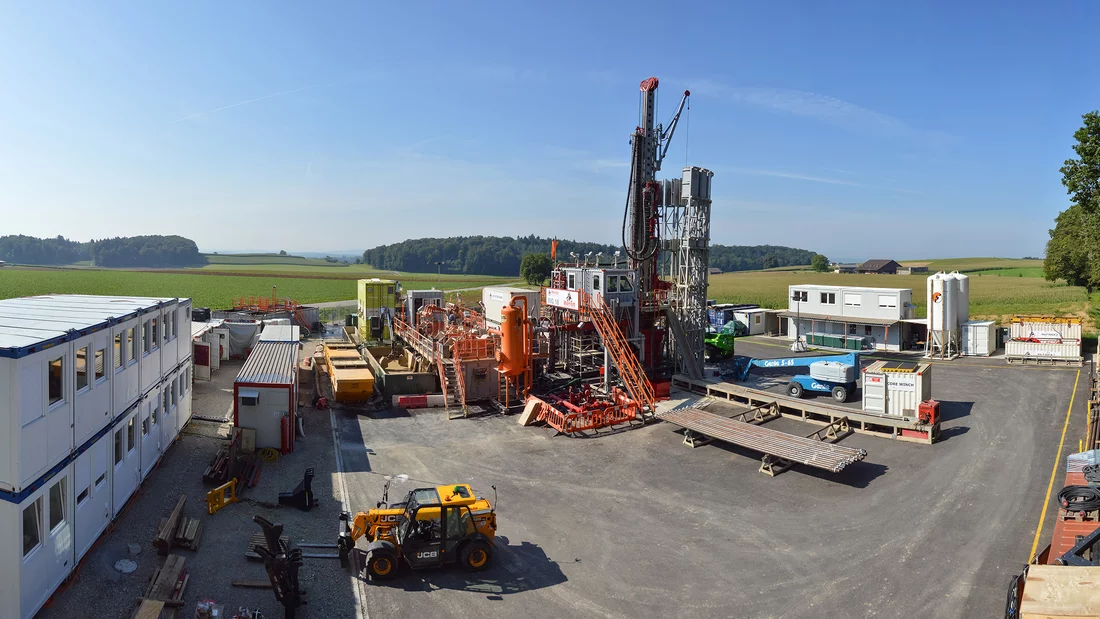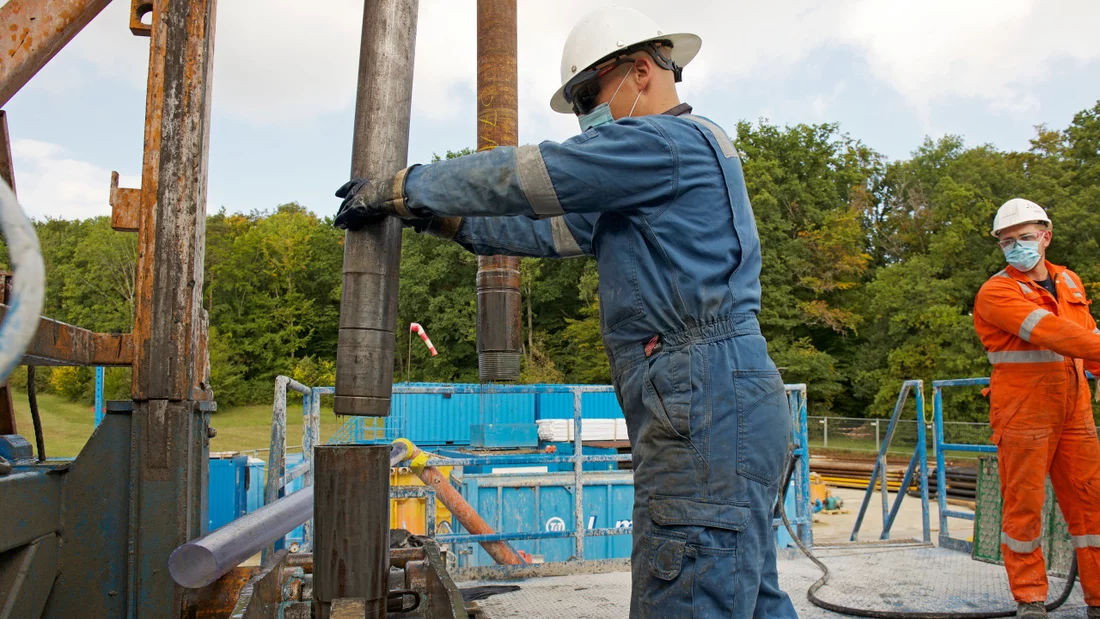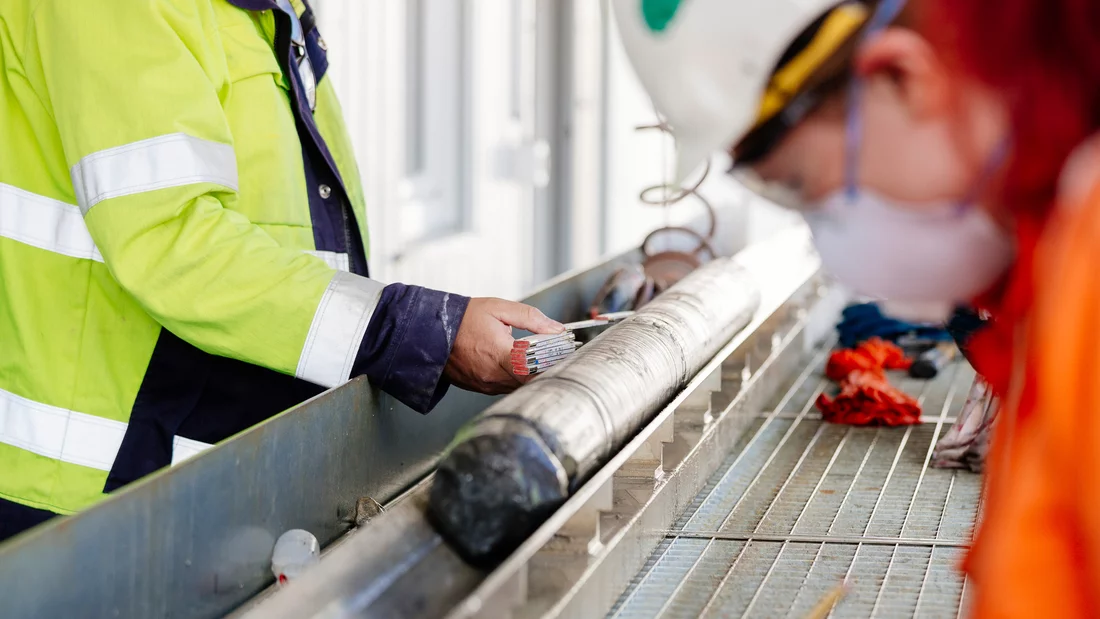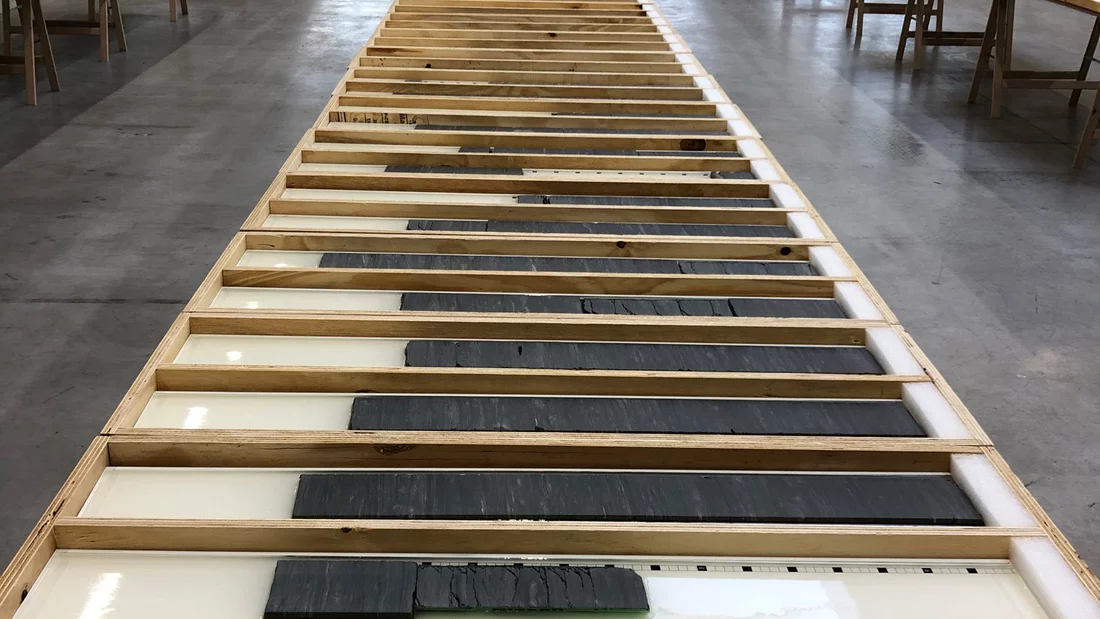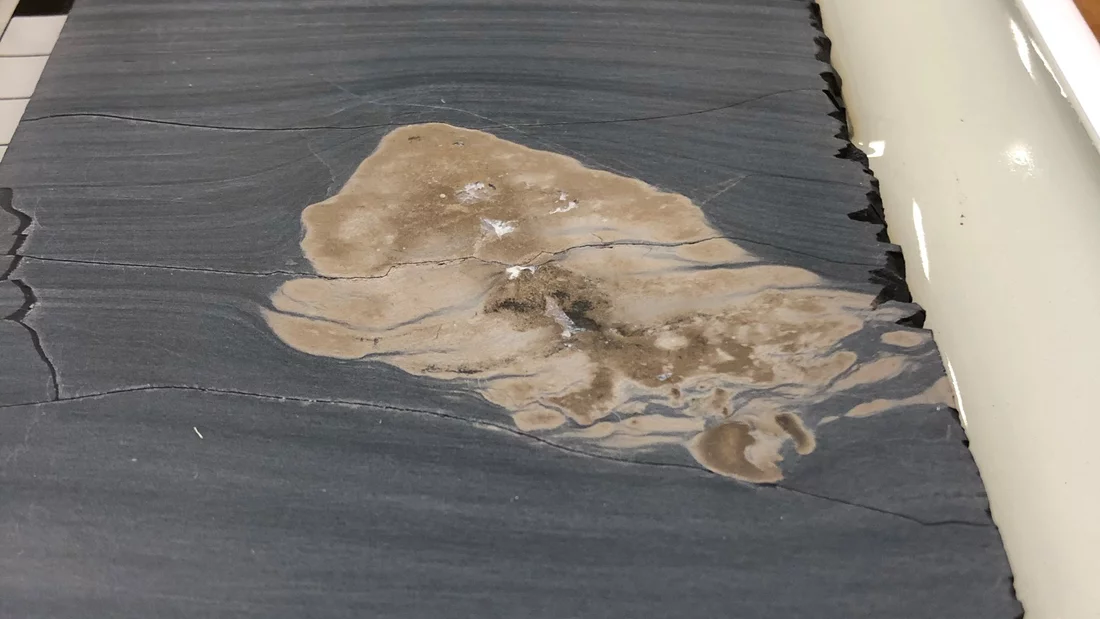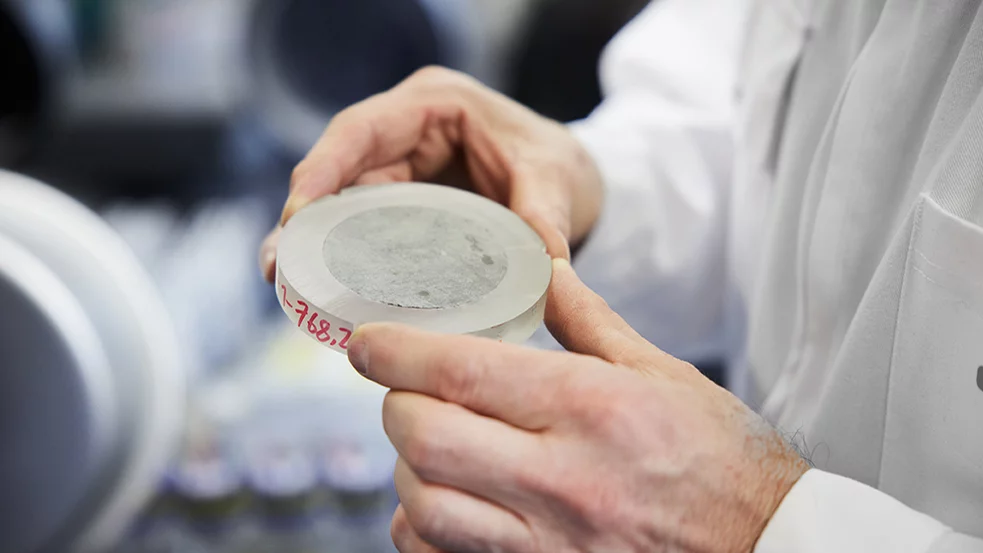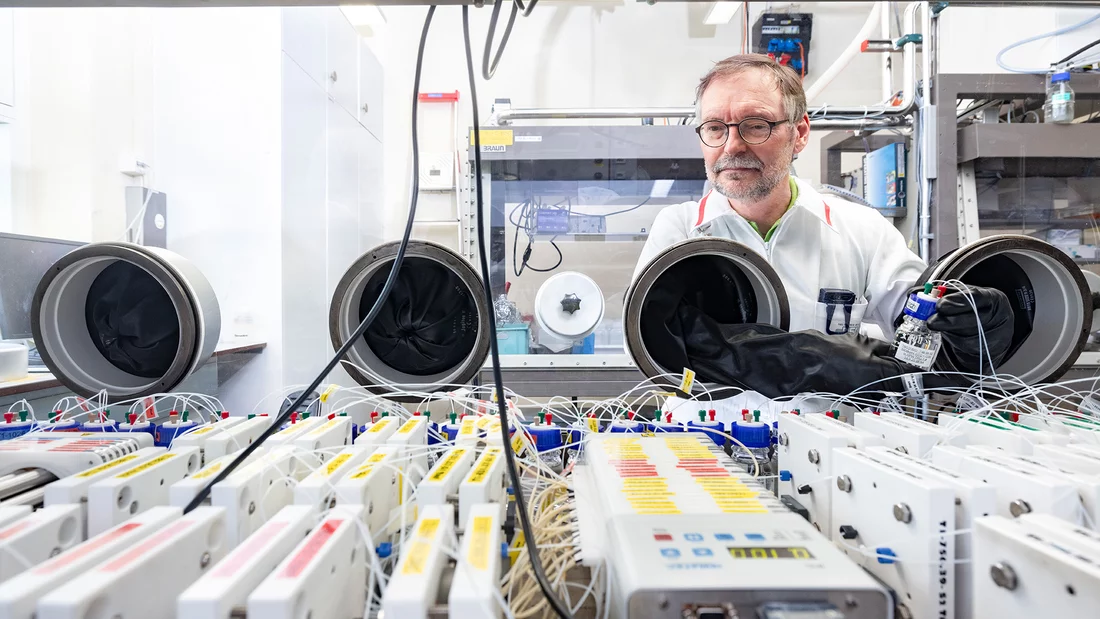Switzerland plans to construct an underground repository for its radioactive waste by 2050. Three sites are under consideration. Researchers at PSI are providing data that will help in determining which is most suitable.
In her laboratory, Maria Marques picks up a plastic test tube filled with liquid: In it, a dark grey sediment has settled on the bottom. "This is Opalinus Clay," the geochemist explains. "Numerous studies have shown that this type of rock is the most suitable for storing radioactive waste."
A layer of Opalinus Clay lies several hundred metres underground across large parts of Switzerland. The composition of the rock varies at different locations. For that reason, researchers are conducting in-depth studies of the clay's composition, as well as its retention and transport properties, to help identify the most suitable site for an underground repository to store nuclear waste.
Zürich Nordost, Jura Ost, or Nördlich Lägern
Maria Marques and her research team in the PSI Laboratory for Waste Management are currently investigating the retention properties of drill core samples from Trüllikon-1, around 30 kilometres northeast of Zurich. Trüllikon is one of the three siting regions identified by the federal government as potentially suitable for a deep geological repository, along with Jura Ost near Brugg and Nördlich Lägern northwest of Zurich. Between August 2019 and April 2020, the National Cooperative for the Disposal of Radioactive Waste (Nagra) extracted drill cores from depths of up to 1,300 metres.
The search for suitable locations is being conducted according to the Sectoral Plan for Deep Geological Repositories. Switzerland is currently in Stage 3, in which drill core samples are analysed to determine which of the three candidate sites is best.
Andreas Pautz, professor for nuclear technology and head of the Nuclear Energy and Safety Division at PSI, is optimistic: "In Switzerland we are fortunate to have Opalinus Clay as a suitable host rock. A deep geological repository is therefore technologically feasible and an extremely safe solution."
"Like a magnet"
Radioactive waste is produced by nuclear power plants, medicine, industry, and research. These radioactive waste materials need to be safely isolated from people and from the environment until radionuclides have decayed into stable non-radioactive nuclei. This effectively means the deep repository and surrounding host rocks must be able to retain the radioactive waste safely for up to a million years.
The steel containers in which the waste is sealed only offer protection for a limited period, explains Sergey Churakov, head of the Laboratory for Waste Management at PSI. "They are expected to breach after about 10,000 years." The radionuclides could then come into contact with the water in the rock and slowly migrate into the surrounding host rocks. Opalinus Clay acts as a natural containment barrier for water, slowing down the migration of radionuclides.
Opalinus Clay formed 173 million years ago, when a shallow sea covered northern Switzerland and neighbouring countries. Fine clay particles settled on the seabed and formed a hard layer approximately 100 metres thick. Opalinus Clay consists of microscopically small platelets, a thousand times thinner than a human hair.
Positively charged radionuclides readily attach themselves to the negatively charged surface of the clay particles and form chemical bonds. "In a sense one could imagine that Opalinus Clay acts like a magnet," says Sergey Churakov. In addition, the rock is virtually impermeable to water. If water does penetrate the clay, it swells and fills the entire space available. This is the so-called self-sealing property of clays.
Binding particles
After Nagra has extracted drill cores from the different sites, mineralogists at the University of Bern conduct studies including the analysis of the rocks' composition. They then send individual samples, welded into airtight containers, to PSI for further measurements.
Maria Marques shows how her team carries out one type of experiments. In a test tube containing an Opalinus Clay sediment suspension, she adds another colourless fluid. Then she places the test tube, along with other samples from the same drilling site, on a laboratory shaker.
The colourless liquid added to the tube is a diluted solution of a radioactive nickel isotope. "We want to know how strongly the clay binds the radioactive ions. The more effectively it retains them, the more suitable the clay is as a host rock for a deep repository."
Counting the seats
After the suspensions have been continuously shaken for a given period, the distribution of the nuclide between the Opalinus sediment and the liquid must be quantified. For phase separation, Maria Marques spins the test tubes in a centrifuge at very high speed, so that all solids settle to the bottom of the tube.
The scientists then use a special device to quantify the radioactivity in the supernatant solutions. The more strongly the clay sample binds the radionuclides, the less radionuclides are detected in the solution.
Given the difference in solution composition before and after the experiment, the researchers are able to calculate the rock sample's adsorption capacity. "Let’s assume the radionuclides are like visitors to a concert hall," Maria Marques explains. "We then count how many seats there are in the hall for the visitors to sit on." All those seated represent the radioactive ions that were bound in the clay. Anyone without a seat, in our analogy, is left in the fluid.
Waiting for the breakthrough
Another research group at PSI is measuring how fast radionuclides in water can move through the rock. The rate needs to be as low as possible in a deep repository. For these experiments, the University of Bern sends selected drill core discs, protected by an outer seal of resin, to PSI in Villigen.
Luc Van Loon, head of the Diffusion Processes Group, mounts the dark grey disc of the Opalinus Clay between two plates in an apparatus similar to a vice. Tubes are mounted left and right to continuously wet the drill core disc with fluid: a solution containing radionuclides on the left, and the same solution without radionuclides on the right, to ensure that the disc is well saturated from both sides.
Every few days the researchers take samples to determine how long it takes for the radionuclides to move through the disc. "We call that the breakthrough," says Luc Van Loon. The experiment continues until researchers have collected enough information to draw conclusions, which can take up to three months.
Reality versus simulation
The measurement results obtained by Maria Marques, Luc Van Loon, and their colleagues provide valuable information about which site in Switzerland is most suitable for storing radioactive waste. Just as important as the collected data are the computer models that simulate processes occurring in the underground repository. Ultimately only such simulations can provide accurate forecasts on whether the repository will comply with the regulatory safety limits over a long period, explains Sergey Churakov. "We’re talking about a million years, after all." Such geological time scales cannot be replicated in a laboratory.
For more than 20 years now, PSI researchers have been working on simulating the adsorption and diffusion of water and radionuclides in Opalinus Clay. Data from measurements at the PSI large research facility Swiss Light Source SLS provide additional detailed information to support the model, such as: Where exactly are the radionuclides located on the clay? Which other atoms surround them once they are bound to the surface?
The scientists repeatedly compare data obtained in laboratory experiments with those estimated by the simulations and the results measured in field-scale rock laboratories. "The results from experiments and simulations must agree," explains Luc Van Loon, "and so far, everything matches up well." The researcher hopes the consistency between the experiments and the modelling will be further confirmed in the ongoing studies. This will support the Sectoral Plan for Deep Geological Repositories in the effort to identify one or more preferred sites for storing Swiss radioactive waste.
Text: Paul Scherrer Institute/Brigitte Osterath
Contact
Dr. Maria Marques Fernandes
Laboratory for Waste Management
Paul Scherrer Institute, Forschungsstrasse 111, 5232 Villigen PSI, Switzerland
Telephone: +41 56 310 23 10, e-mail: maria.marques@psi.ch [German, English, Portuguese]
Dr. Luc Van Loon
Laboratory for Waste Management
Paul Scherrer Institute, Forschungsstrasse 111, 5232 Villigen PSI, Switzerland
Telephone: +41 56 310 22 57, e-mail: luc.vanloon@psi.ch [German, English, Dutch]
Prof. Dr. Sergey Churakov
Laboratory for Waste Management
Paul Scherrer Institute, Forschungsstrasse 111, 5232 Villigen PSI, Switzerland
Telephone: +41 56 310 41 13, e-mail: sergey.churakov@psi.ch [German, English, Russian]
Prof. Dr. Andreas Pautz
Research Division Nuclear Energy and Safety
Paul Scherrer Institute, Forschungsstrasse 111, 5232 Villigen PSI, Switzerland
Telephone: +41 56 310 34 97, e-mail: andreas.pautz@psi.ch [German, English]
Further information
The three siting regions under consideration are described on the Nagra website:
https://www.nagra.ch/en/sitingregions.htm
Current information on the deep boreholes is also available on the Nagra website:
https://www.nagra.ch/en/Up-to-date-information-on-the-deep-boreholes.htm
Copyright
PSI provides image and/or video material free of charge for media coverage of the content of the above text. Use of this material for other purposes is not permitted. This also includes the transfer of the image and video material into databases as well as sale by third parties.

